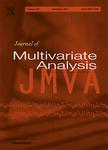版权所有:内蒙古大学图书馆 技术提供:维普资讯• 智图
内蒙古自治区呼和浩特市赛罕区大学西街235号 邮编: 010021

作者机构:McGill Univ Dept Math & Stat Montreal PQ H3A 0B9 Canada
出 版 物:《JOURNAL OF MULTIVARIATE ANALYSIS》 (多元分析杂志)
年 卷 期:2016年第147卷
页 面:202-217页
核心收录:
学科分类:07[理学] 0714[理学-统计学(可授理学、经济学学位)] 0701[理学-数学] 070101[理学-基础数学]
基 金:Natural Sciences and Engineering Council of Canada (NSERC) [RGPIN 217398-13, RGPIN-2015-03805, RGPIN 37993-11] Fonds de recherche du Quebec Nature et technologies [FQRNT 2012-146827] Schulich Foundation Institut des sciences mathematiques du Quebec Natural Sciences and Engineering Council of Canada (NSERC) [RGPIN 217398-13, RGPIN-2015-03805, RGPIN 37993-11] Fonds de recherche du Quebec Nature et technologies [FQRNT 2012-146827] Schulich Foundation Institut des sciences mathematiques du Quebec
主 题:Change-point models EM algorithm Regularization LASSO SCAD Alzheimer's disease
摘 要:Follow-up studies on a group of units are commonly carried out to explore the possibility that a response distribution has changed at unobservable time points that are different for different units. Often, in practice, there will be many potential covariates, which may not only be associated with the response distribution but also with the distribution of the unobservable change-points. Here, the covariates are allowed to enter the change point distribution through a proportional odds model whose baseline odds is assumed to be piecewise constant as a function of time. The combination of a large number of putative regression coefficients in the response distributions as well as the change-point distribution, alone leads to a challenging simultaneous variable selection and estimation problem. Moreover, selection and estimation of the parameters that determine the coarseness of the baseline odds function adds a further level of complexity. Using penalized likelihood methods we are able to simultaneously perform variable selection, estimation, and determine the coarseness of the baseline odds function. Our approach is computationally efficient and shown to be consistent in variable selection and parameter estimation. We assess its performance through simulations, and demonstrate its usage in fitting a model for cognitive decline in subjects with Alzheimer s disease. (C) 2016 Elsevier Inc. All rights reserved.